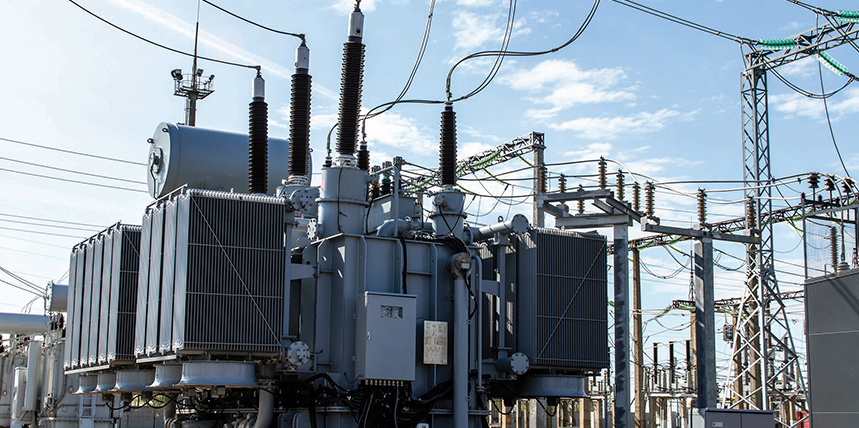An out-of-phase synchronization (OOPS) event results in a torque transient on the generator and prime mover. It exposes the generator, generator step-up (GSU) transformer, and system elements to a current transient that puts mechanical and thermal stresses on windings and other conductors. These transients can be significant and result in through-current magnitude equivalent to a three-phase fault located at the …
Effect of CT Saturation on Transformer Differential Protection
This article demonstrates how current transformer (CT) saturation can adversely affect transformer differential protection and how to easily mitigate its effects via inbuilt relay functions. We provide calculations and simulation for a three-phase fault on the low side of the transformer just external to the CTs. APPLICATION The application is for a three-phase delta-wye connected transformer serving station at a …
Using Harmonic Blocking to Prevent Spurious Trips During Inrush Conditions
A numerical feeder protection relay would trip when a collector feeder breaker is closed due to inrush at a solar photovoltaic site. The inrush current is due to energizing power transformers. This article demonstrates how to use harmonic blocking to prevent this unwanted tripping. Magnetizing inrush currents may cause overcurrent elements to operate when the line is energized. The fundamental …
Catastrophic Generation Event Analysis
A major event occurred at a large power plant in the southwest region. A new generator circuit breaker (GCB) had been installed for a combined cycle power block (CCPB) consisting of a gas turbine generator (CTG) and a steam turbine generator (STG). The new GCB is located on the low side of the generator step-up transformer (GSU) serving the CTG. …
Setting Overcurrent Protection for Grounding Transformers on Feeders for Renewable Sites
Grounding transformers are most frequently — but not exclusively — used in the renewable industry to provide a relatively low-impedance path to ground in case of surges. This allows for safe maintenance of the grid without fear of damaging the electrical infrastructure. If the grounding transformer is connected to a feeder, special considerations are required to set the protection to …
Event Analysis: Overall Differential Tripping
The overall differential protection for a generator step-up transformer (GSU) began to trip when the generator was synced to the plant switchyard. Figure 1 shows the one-line diagram for the overall differential protection. There is one set of current transformers (CTs) on the high side of the GSU, one set of CTs on the low side of the GSU not …
Condition Monitoring: Generator Stator Ground Capacitance
This article demonstrates how to use numerical generator protection relay profile capability to measure the stator ground capacitance of a large combustion turbine generator. The measurements are taken when the generator is on-line and running at full speed while the generator breaker is open (no load), and again during startup as the exported power increases. The stator capacitance-to-ground (Figure 1) …
Generator Differential Trip Analysis
A large steam turbine generator tripped on 87 phase differential protection while attempting to synch the machine to the grid. However, only the main generator protection relay operated — not the backup protection. The goal of the analysis is to determine why only one relay operated and what caused the trip to occur. EVENT ANALYSIS Figure 1 shows the system …
Sync Check Supervision
The purpose of the sync check function (25) is to ensure that the voltage magnitude, phase angle, and frequency of the generator (VX) and the utility system (VS) are within a set of acceptable limits before the generator is synchronized with the system via closing the circuit breaker that connects them (Figure 1). An improper sync can result in electrical …
Generator Stator Ground Fault Protection
Generator faults are usually serious and can lead to significant repair costs and long outage times. PART I: ANALYSIS Part 1 demonstrates how to analyze a stator ground fault for a large combustion turbine generator. The faulted phase and fault location are determined using fault voltage recorded by the numerical generator protection relay installed for this generator. This information is …









